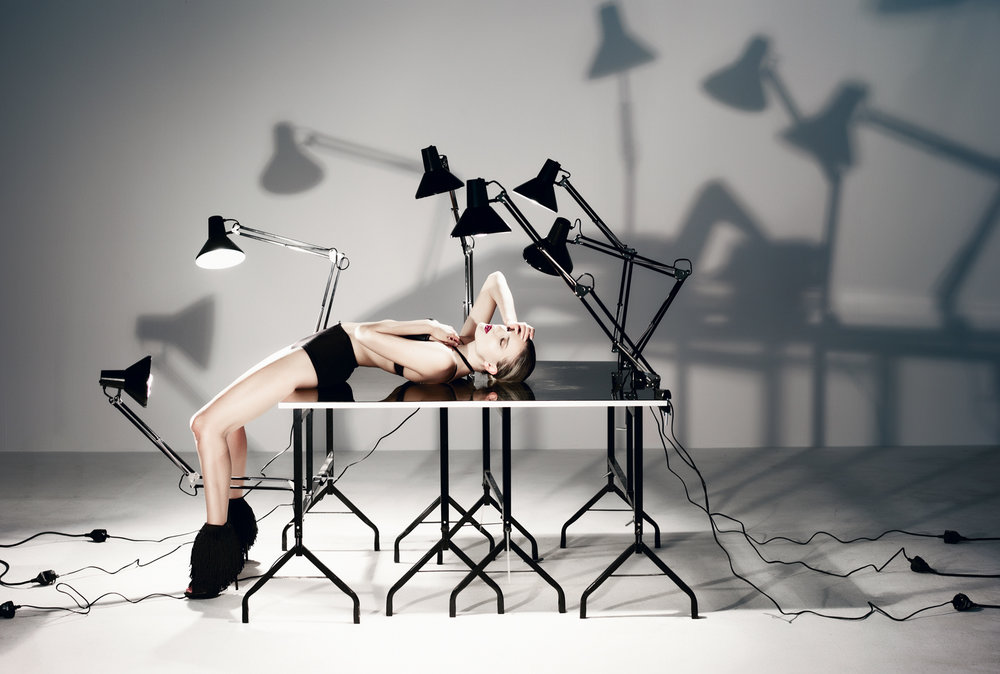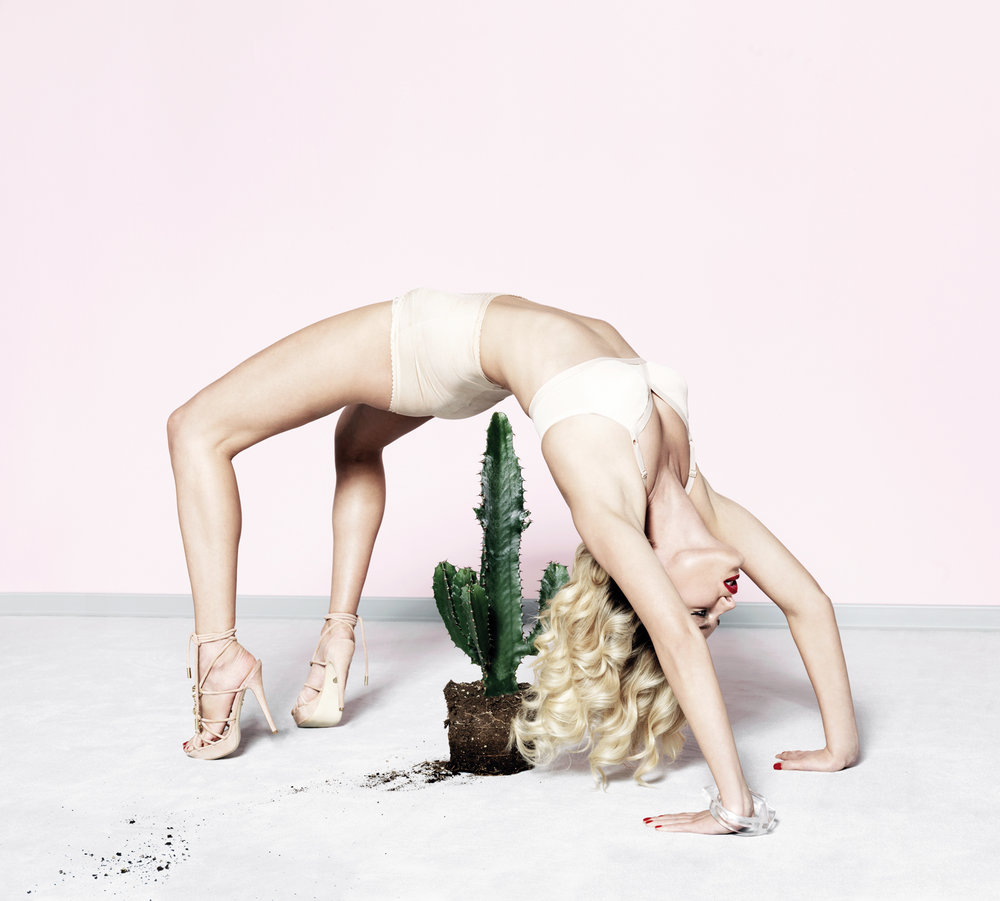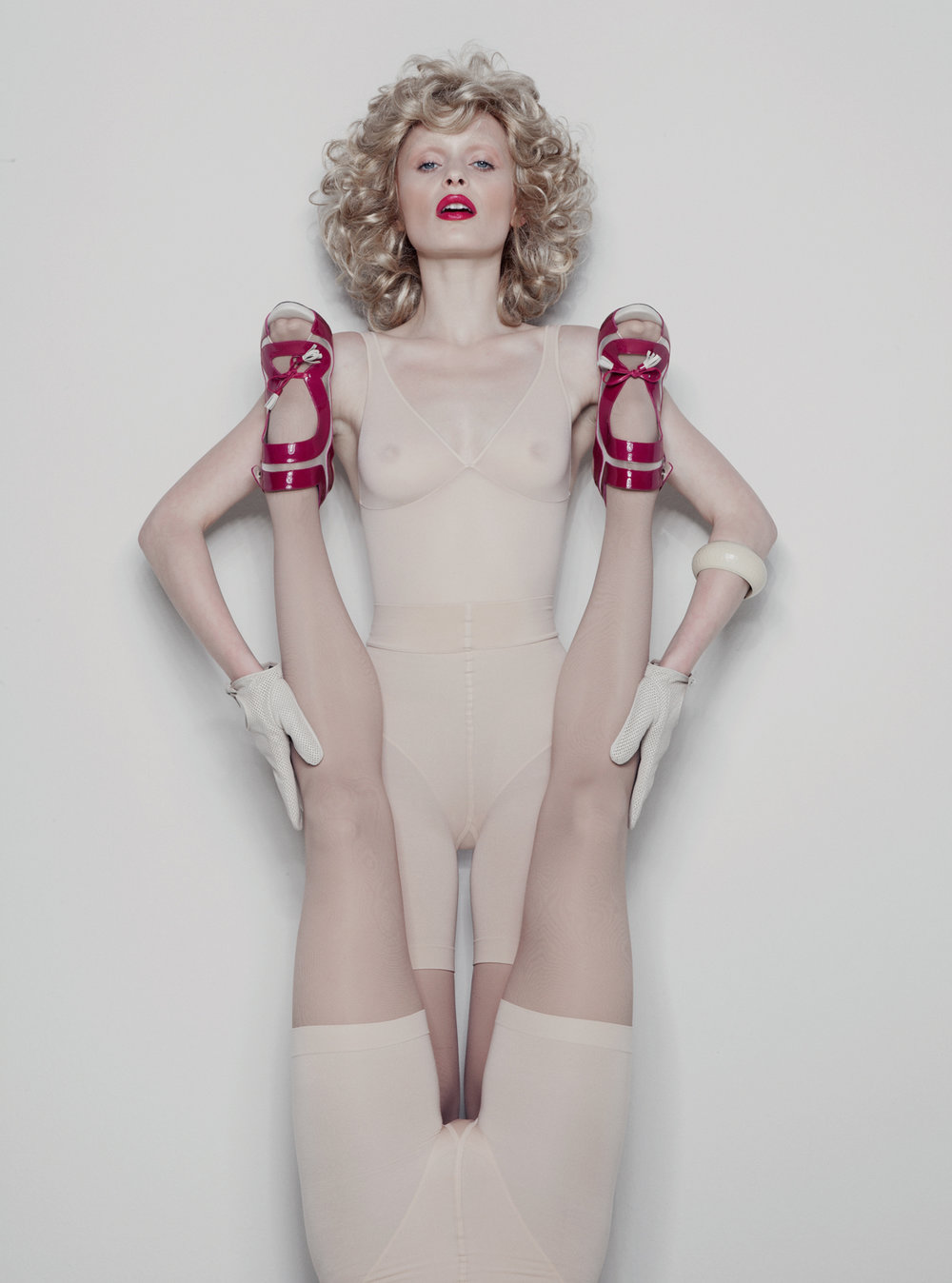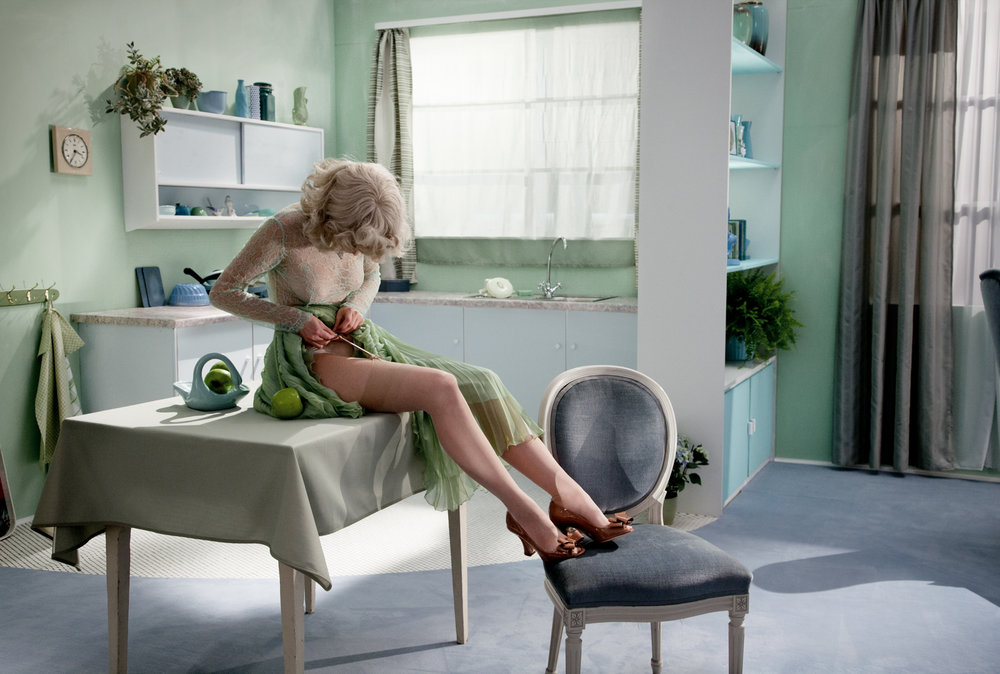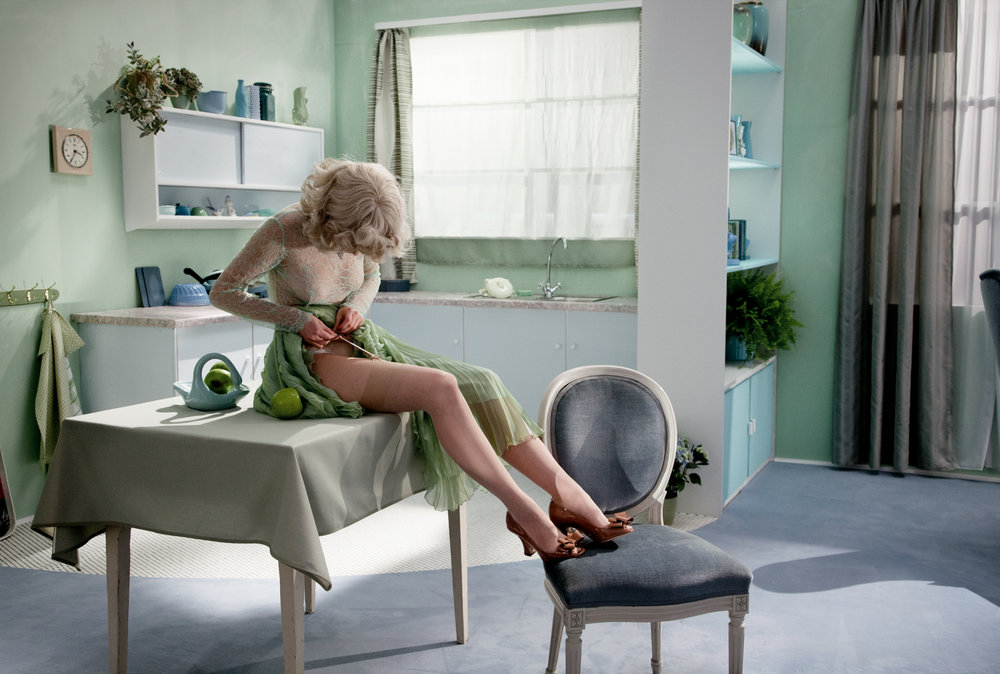MONICA MENEZ - ELEGANT, EROTIC, ETHEREAL
ELEGANT, EROTIC, ETHEREAL
German photographer Monica Menez’S work is at once elegant, sexy and tongue in cheek. A fan of Guy Bourdin and Helmut Newton, she likes to explore the familiar set in the unknown. In recent years, she has become a leading voice in fashion film. Her Precious shows how erotic something mundane as making a pizza can be, while Odditory offers a very naughty music class indeed. And all, of course, in gorgeous clothes!
“I have always had a tendency to an eccentric and edgy personal style. When I was a teenager, styling was hugely important to me, and I have dressed in black ever since. The only thing that has changed over the years is that my level of eccentricity has decreased. Styling does not play such a big role anymore.”
Monica, your work tells stories about many different kinds of women. What's your inner woman?
At the bottom of my heart, I am a goth who lives out her passion for pink and blue colors and blond curls in her work. So, I enjoy depicting women who are all ‘tart-ed up’, maybe because I myself am quite the opposite of what these images show. This contrast appeals very much to me.
As a child, what did you want to be when you grew up?
It was clear to me rather early that I wanted to do something creative and to express myself. I had no specific profession in mind, so it could have been any creative job: fashion design, graphic design, you name it. Then I came across photography, which was perfect for me, since it combines so many of my interests, such as fashion, furnishings, colors, and much much more.
When did you get your first camera and how did you become a photographer?
I got my first camera when I was 16 and my little sister served as my first model. But, originally, I wanted to study graphic design. One part of the qualifying examination was photography. This was the moment I realized that photography suits me more, and so I decided to undertake an apprenticeship at a commercial photographer. Afterwards, I worked as a press photographer, and during that time, I increasingly came into contact with fashion photography.
How was it to work as a press photographer. What did you do? And how did that work out for you?
I worked a lot for a city magazine, for which I predominantly took portrait photos of dancers, actors, DJs and other personalities. I learned a lot during that time. Usually, there was very little time to take the pictures, so I got used to being quick and to work with the given ambient light.
Since 2002, you mainly shoot and film fashion for both magazines and labels. Could you tell us a bit more about how a typical Menez image or film comes to life?
The ideas usually just crosses my mind. Since I like photography as much as making films, I always decide beforehand which artistic form is more practical and suitable for conveying a particular idea. When I work in a photography studio, I like things to be rather abstract and reduced, and this environment gives me the opportunity to improvise. Here, I often have a specific idea for only one motif, and the shooting goes from there. When working on a film, there is a story in the foreground that I want to tell, and the setting is much more opulent, so every detail needs to be preassigned, which leaves less room for spontaneity.
What are your main sources of inspiration?
I can get inspired by many things. Regarding film, it's often music, especially strange music. In terms of photography, itЂs mostly colors or sometimes just a piece of clothing.
“I am a goth who lives out her passion for pink and blue colors and blond curls in her work. So, I enjoy depicting women who are all ‘tart-ed up’, maybe because I myself am quite the opposite of what these images show. This contrast appeals very much to me.”
What other photographers / artists in the genre do you greatly admire?
My favorite photographers are Guy Bourdin and Helmut Newton, and my favorite filmmaker is John Walters. I also enjoy watching old Hollywood blockbusters.
You do a lot of fashion film, which is a relatively new phenomenon combining elements of many genres. How would you define a fashion film?
A fashion film is the art of presenting fashion and styling in an interesting way. It’s best when wrapped into a story. An underlying story is very important to me. A fashion film should not only be about beautiful clothes in motion. The element of humor is also an essential part of my films. However, there are also abstract fashion films that I find very exciting.
Your moving images seem to have the same characteristics as your stills: elegant, erotic and a bit cheeky. I for one never realized that making a pizza could be such an erotic affair! Could you tell us a bit more about Precious?
Precious actually started off as a photo project. While I was working on it, I realized that it was hard to express the story I wanted to tell by means of photography. In order to finish the project, I had the idea of filming the scenes. I enjoyed the final result so much that I decided to continue my work in this field. So the reason why I started making fashion films was rather coincidental.
Ever dreamt of making a feature film?
Until now, no. But never say never!
Style is a dominant element in your work, what is your personal style? Fashionista? Or happy in jeans and sneakers?
I have always had a tendency to an eccentric and edgy personal style. When I was a teenager, styling was hugely important to me, and I have dressed in black ever since. The only thing that has changed over the years is that my level of eccentricity has decreased. Styling does not play such a big role anymore.
What projects are you currently working on?
I have only just finished filming my new fashion film Mister Mister, which is now in post-production. The film will be released by the end of the year.
What do you wish for in 2017?
I have had an idea for a more sumptuous fashion film in mind for quite some time now, and I hope to find a client who helps me to implement and finance it.
INTERVIEWED BY PETER SPEETJENS



